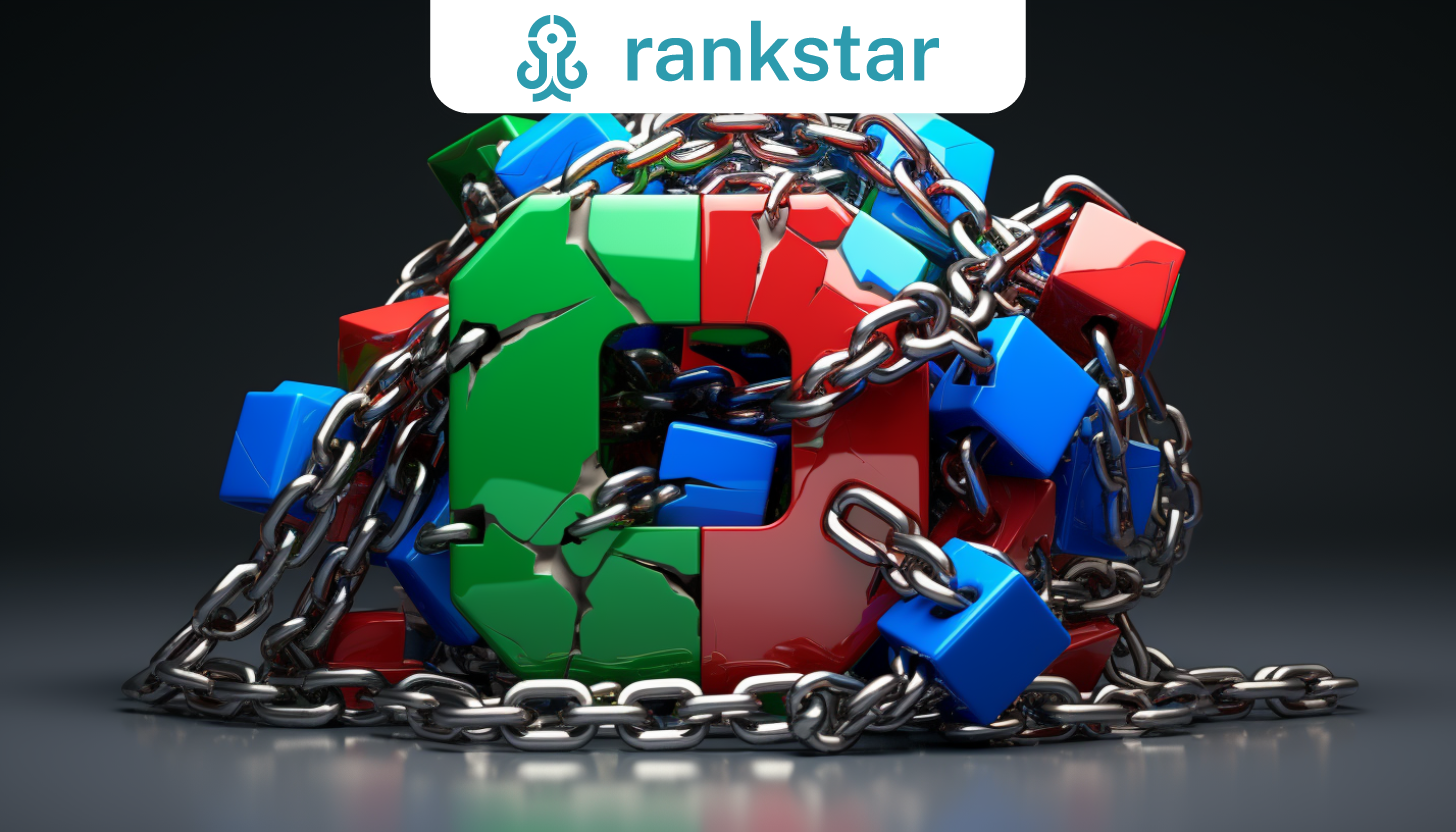You’ve noticed a sudden drop in your website’s ranking. Don’t panic! It’s likely you’ve been hit by a Google penalty. But what’s that, you ask? And more importantly, how do you bounce back?
In this article, we’ll delve into the types of Google penalties, uncover their common causes, and guide you through the recovery process.
So strap in, we’re about to help you reclaim your rightful spot in those Google search results.
Unveiling the Mystery: What Are Google Penalties?
You’ve got to understand, Google penalties are essentially punishments handed out when your site violates Google’s Webmaster Guidelines. It’s like a swift kick from the digital world’s strictest referee.
Now, these penalties come in two flavors: algorithmic and manual. Algorithmic penalties are a result of updates or changes in Google’s algorithms, while manual ones are the handiwork of human auditors at Google. You can check for manual penalties in your Google Search Console.
What’s the cause? Often, it’s sneaky stuff like keyword stuffing, hidden links, irrelevant keywords, bad redirects, or cloaking (especially seem in the iGaming industry). But don’t despair! If you’ve been hit, recovery is possible. It might take anywhere from 10 to 30 days, though.
The Two Types: Algorithmic and Manual Penalties
In your SEO journey, you’ll likely encounter two different types of punishments: algorithmic and manual.
Algorithmic penalties occur without human intervention, triggered by updates or changes in Google’s search algorithms that detect infractions. They’re often harder to diagnose because they’re not explicitly communicated.
On the other hand, manual penalties are directly issued by Google’s team when they find that your site violates their guidelines. You’ll receive a notification via Google Search Console if this happens.
Understanding the difference is crucial. To navigate this, keep abreast with Google’s algorithm updates and regularly check your Search Console.
If you’re hit, don’t panic. Identify the cause, correct it, and submit a reconsideration request. It’s a test of your SEO resilience.
Unraveling the Roots: Common Reasons for Google Penalties
Let’s delve into the common reasons why your site might be on the receiving end of a severe crackdown.
You’ve got to be careful with keyword stuffing. Google’s algorithms are smart enough to pick up when you’re repeating the same keyword excessively. It’s a no-go.
Similarly, hidden links and irrelevant keywords are frowned upon. These are manipulative tactics that can land you with a penalty.
Bad redirects and cloaking – showing different content to users and search engines – are also on the naughty list.
Beyond these, even seasonal changes, increased online competition, poor content quality, and algorithm changes can pull your rankings down.
Simple errors in manual entry can also cost you dearly. So, it’s crucial to stay vigilant and keep your SEO practices clean and transparent.
Beyond the Obvious: Other Factors Leading to a Decline in SERPs
Beyond the usual suspects, there are other factors that might be dragging your site down in search engine rankings.
Ever consider seasonal trends? Off-seasons can lead to a slump in your search position. Similarly, increased online competition may push your site down. Yes, new websites crop up daily, all vying for that top spot.
Importantly, never underestimate the power of content quality. Google loves high-quality, relevant content and rewards it. A sudden algorithm change can also cause a dip. Even innocent marketers sometimes fall prey to these updates.
Lastly, manual entry errors can lead to penalties. It’s crucial you’re meticulous in your SEO practices. Remember, understanding these less obvious factors can help you maintain a steady position in SERPs.
The Recovery Timeline: How Long Does It Usually Take?
You might be wondering how long it typically takes to bounce back from such a setback. The answer isn’t as straightforward as you’d like. Depending on the severity, it could range from a few days to several months.
But don’t despair! Here are some steps to help accelerate the process:
- Identify the root cause: Use SEO tools to find what led to the penalty.
- Rectify the issue: Once you’ve identified the problem, fix it right away.
- Submit a reconsideration request: After fixing the issues, notify Google via a reconsideration request.
- Patience: Google needs time to crawl your site and update its database.
- Monitor results: Keep an eye on your website’s performance to ensure it’s improving.
The Road to Recovery: Steps to Bounce Back From Google Penalties
Bouncing back from a setback requires a well-crafted plan and the right tools. When it’s a Google penalty, you’ve got to act fast. Start by identifying the root cause. Did you stuff keywords, hide links, or use irrelevant ones? Once you’ve figured that out, clean up your act. Remove low-quality content, fix the errors that led to the penalty, and improve your site’s user experience.
Here’s a quick guide to help you out:
| Steps to Recover | Description |
| Identify cause | Understand why you were penalized |
| Clean up content | Remove low-quality or irrelevant content |
| Fix errors | Rectify the issues that led to the penalty |
| Improve UX | Enhance user experience on your site |
| Monitor progress | Use SEO tools to track your recovery |
Pre-Recovery Measures: Identifying and Fixing Issues
Before jumping into recovery, it’s crucial that you identify and fix the issues that led to your site’s downfall.
Start by running a comprehensive SEO audit to pinpoint problem areas. Use tools like Google’s Search Console to check for manual penalties and understand what you’re being penalized for.
Look at your backlink profile, and if you find spammy or irrelevant links, disavow them. Analyze recent algorithm updates as well, as they could have affected your rankings.
Your content quality is another area to scrutinize. Ensure it’s valuable, original, and relevant.
Once you’ve identified the issues, it’s time to fix them. Modify your SEO strategies, clean up your content, create a relevant topical map, and revamp your backlink strategy.
Post-Penalty Actions: Removing Unhealthy Backlinks and Improving Content
After identifying the issues, it’s time to take action by removing unhealthy backlinks and enhancing the quality of your content.
Start by using tools like Majestic SEO to clean up your backlink profile. You’ll need to disavow links that are harmful to your site’s reputation. It’s critical you’re thorough, as Google’s algorithm is sharp and punitive towards sketchy backlinks.
Next, focus on your content. High-quality, relevant content is paramount in Google’s eyes. Audit your existing content, remove or update any that’s substandard. Incorporate SEO and ORM strategies like proper keyword usage and meta-tagging.
The Role of User Experience in the Recovery Process
You’ve got to focus on improving user experience as a crucial part of your site’s recovery process. Google values user experience highly and it’s a significant part of their ranking algorithm.
Here’s how you can improve it:
- Page Speed: Users love fast sites. Ensure your pages load quickly by optimizing images and using efficient coding. Use tools like Google’s PageSpeed Insights for speed evaluations.
- Navigation: Make your site intuitive and easy to navigate. Use a simple menu structure with clear categories.
- Mobile Optimization: Most users are on mobile. Ensure your site is fully responsive. Use Google’s Mobile-Friendly Test tool to check responsiveness.
Refining Strategies: Adapting to Google’s Best Practices for Future Prevention
Now that you’ve gained insights into the role of user experience in the recovery process, let’s move ahead to refining your SEO strategies.
To avoid future Google penalties, it’s crucial to adapt to Google’s best practices. Start by ensuring your keywords are relevant and not over-stuffed. Don’t cloak or use hidden links; transparency is key. Also, avoid bad redirects and focus on creating quality content that provides value to your users.
Monitor your site’s performance using SEO tools and regularly conduct audits to identify and rectify issues. Remember, Google’s algorithms are constantly evolving, so make sure you’re always updated with the latest changes.
Contact Rankstar For the Best Google Penalty Recovery Service
Get Back to Google’s Good Graces
Did a recent algorithm penalty knock you off the first page? Our Google penalty recovery service can diagnose the issue and get your site ranking again.
With a 100% success rate, our team of SEO experts expedites restoring your organic visibility. Don’t lose business while buried in search results.
Frequently Asked Questions
What Is the Impact of Google Penalties on the Revenue of an Online Business?
Google penalties can severely impact your online business’s revenue. They lower your site’s ranking, reducing visibility and traffic. This leads to fewer customers and sales, ultimately affecting your bottom line. It’s crucial to avoid such penalties.
Can a Website Receive Multiple Penalties From Google at the Same Time?
Yes, your website can receive multiple penalties from Google simultaneously. If you’re violating various guidelines, Google’s algorithm and manual reviewers can issue multiple penalties, compounding your site’s ranking issues.
How Often Does Google Update Its Algorithm Leading to Potential Penalties?
Google updates its algorithm frequently, sometimes daily. You’re not always notified, so penalties can seem sudden. Keep abreast of SEO news to anticipate changes and avoid potential penalties. It’s a continuous, proactive process.
Are There Any Specific Industries or Sectors More Prone to Google Penalties?
No industry is more prone to Google penalties. It’s about your SEO practices. If you’re stuffing keywords, hiding links, or using shady tactics, you’ll likely face penalties, regardless of your sector. Always follow Google’s guidelines.
How Does Google Determine the Severity of the Penalty to Be Levied on a Particular Website?
Google determines penalty severity based on the extent of your site’s violations. If you’ve heavily abused guidelines, you’ll face harsher penalties. It’s crucial to adhere to Google’s Webmaster Guidelines to avoid such penalties.
Conclusion
In conclusion, recovering from Google penalties demands a keen understanding of SEO strategies and Google’s guidelines. You must identify the cause, fix issues, and improve your content and user experience.
It may be a long process, but with the right tools and a commitment to adhere to Google’s best practices, you’ll bounce back stronger.
Always remember, the key to avoiding future penalties lies in maintaining high-quality content and fair SEO practices.





































